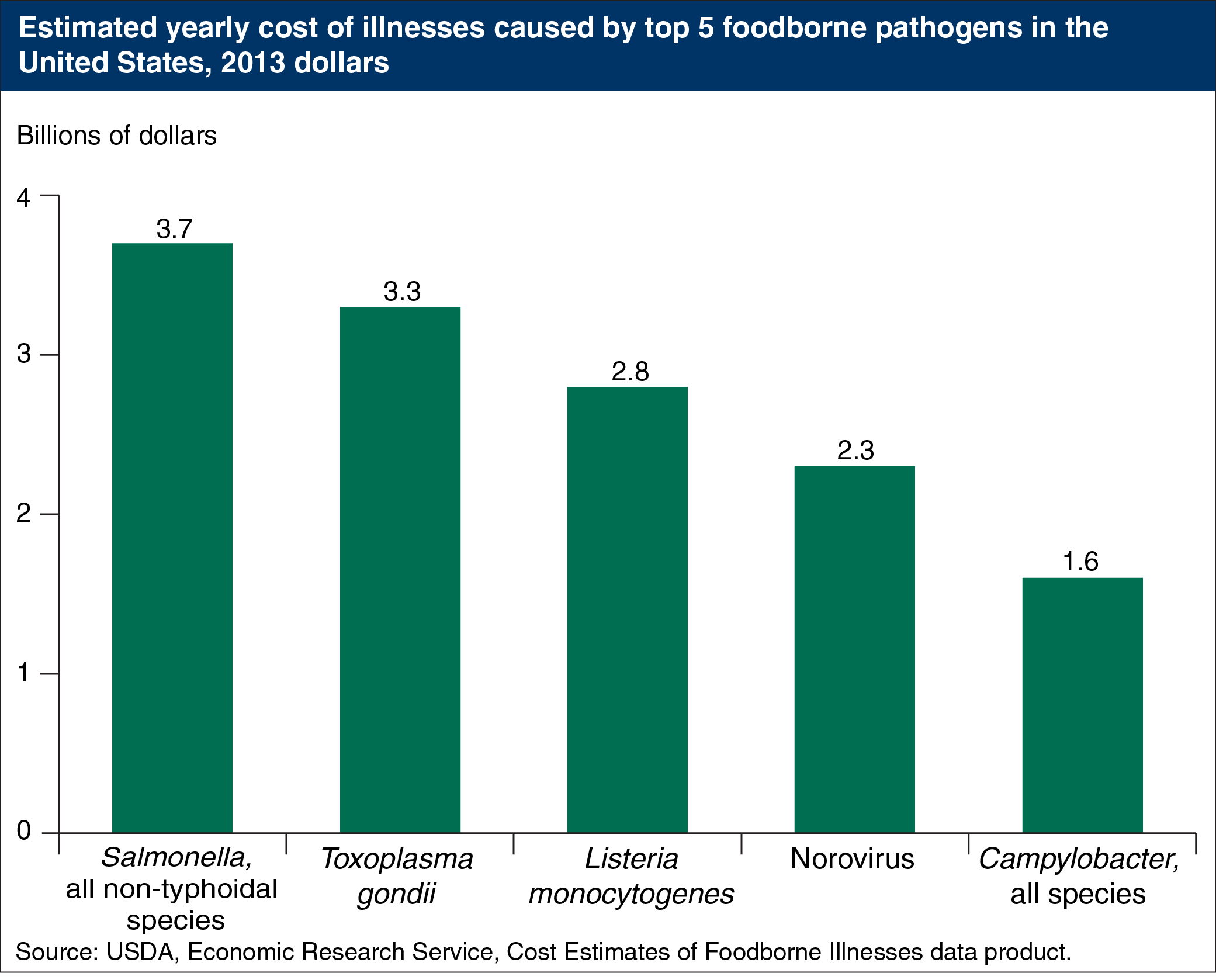Top 5 foodborne pathogens cost the U.S. economy $14 billion each year
- by Sandra Hoffmann
- 7/9/2015

In a typical year, 15 pathogens cause over 95 percent of the 9.4 million cases of foodborne illness in the United States for which a pathogen cause can be identified. ERS estimates that these 15 pathogens impose $15.5 billion per year in medical costs, wages lost from time away from work, and societal willingness to prevent premature deaths. Just five pathogens—Salmonella (all non-typhoidal species), Toxoplasma gondii, Listeria monocytogenes, Norovirus, and Campylobacter—account for 90 percent of this economic burden. A foodborne pathogen’s economic burden is determined by both the number and severity of illnesses it causes. Norovirus is the most common U.S. foodborne illness, but one from which 90 percent of infected people recover without seeking medical care. In contrast, Listeria monocytogenes sickens a relatively small number of Americans each year, but almost 20 percent of those infected die. The statistics for this chart are from the ERS report, Economic Burden of Major Foodborne Illnesses Acquired in the United States, May 2015.

